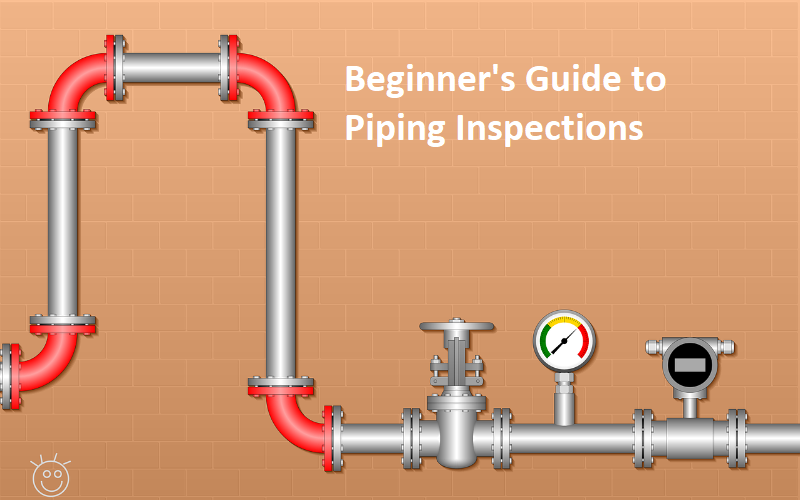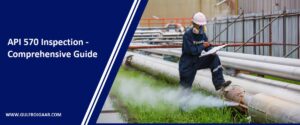Ensuring the integrity and safety of piping systems is crucial in various industries. This guide will introduce you to the fundamentals of piping inspections, covering different inspection types, tools, common issues, and best practices for beginners.
Importance of Piping Inspections
- Safety Assurance: Prevent leaks, bursts, and potential hazards.
- Regulatory Compliance: Meet industry standards and legal requirements.
- System Longevity: Identify and address issues early to extend the lifespan of the piping system.
- Operational Efficiency: Maintain optimal performance and avoid costly downtimes.
Types of Piping Inspections
1. Visual Inspections
- External Visual Check: Assess the exterior surfaces for corrosion, leaks, and physical damage.
- Internal Visual Check: Utilize borescopes or similar devices to inspect the internal pipe surfaces.
2. Nondestructive Testing (NDT)
- Ultrasonic Testing (UT): Employs high-frequency sound waves to measure thickness and detect material flaws.
- Radiographic Testing (RT): Uses X-rays or gamma rays to visualize the internal structure, identifying hidden defects.
- Magnetic Particle Testing (MPT): Detects surface and near-surface discontinuities in ferromagnetic materials.
- Dye Penetrant Testing (DPT): Applies a dye to highlight cracks and surface defects.
3. Hydrostatic Testing
- Involves filling the pipe with water and pressurizing it to check for leaks and ensure it can withstand operational pressures.
4. Leak Detection
- Helium Leak Testing: Uses helium and a mass spectrometer to detect tiny leaks.
- Pressure Decay Testing: Measures pressure loss over time to identify leaks.
Essential Tools and Equipment
- Borescopes: For internal visual inspections.
- Ultrasonic Thickness Gauges: Measure pipe wall thickness.
- Radiographic Equipment: For capturing internal pipe images.
- Magnetic Particle and Dye Penetrant Kits: For detecting surface defects.
- Pressure Testing Equipment: For performing hydrostatic and leak tests.
Common Issues to Identify
- Corrosion: Look for rust, pitting, and material degradation.
- Cracks: Detect fractures or splits in the piping.
- Leaks: Identify any signs of fluid escaping.
- Weld Defects: Inspect welds for cracks, incomplete fusion, or porosity.
- Blockages: Ensure the pipes are free from obstructions.
Best Practices for Piping Inspections
- Routine Inspections: Schedule regular inspections based on the system’s usage and environmental factors.
- Detailed Documentation: Maintain comprehensive records of inspections, findings, and maintenance actions.
- Qualified Inspectors: Ensure inspections are performed by trained and certified professionals.
- Safety First: Adhere to safety guidelines to protect inspectors and the system’s integrity.
- Stay Updated: Keep informed about the latest industry standards, regulations, and technological advancements in piping inspections.
Must Read – API 570 Inspection – Comprehensive Guide
Step-by-Step Inspection Process
1. Preparation
- Review the system’s design and operational history.
- Gather all necessary tools and safety equipment.
- Inform relevant personnel and secure the inspection area.
2. Initial Assessment
- Conduct a preliminary visual inspection to identify obvious issues.
- Monitor for changes in pressure, temperature, or flow indicating potential problems.
3. Comprehensive Inspection
- Perform visual, NDT, and other specific tests as required.
- Document all findings meticulously, noting the location and nature of any defects.
4. Data Analysis and Reporting
- Analyze the inspection data to evaluate the severity and implications of defects.
- Prepare a detailed report with recommendations for repairs or additional monitoring.
5. Follow-Up Actions
- Implement necessary repairs or maintenance actions.
- Schedule follow-up inspections to confirm the effectiveness of repairs and monitor any ongoing issues.
By adhering to this guide, beginners can establish a robust foundation in piping inspections, promoting safety, compliance, and efficiency in maintaining piping systems.
Also – Crane Inspection Checklist
Share with Friends






